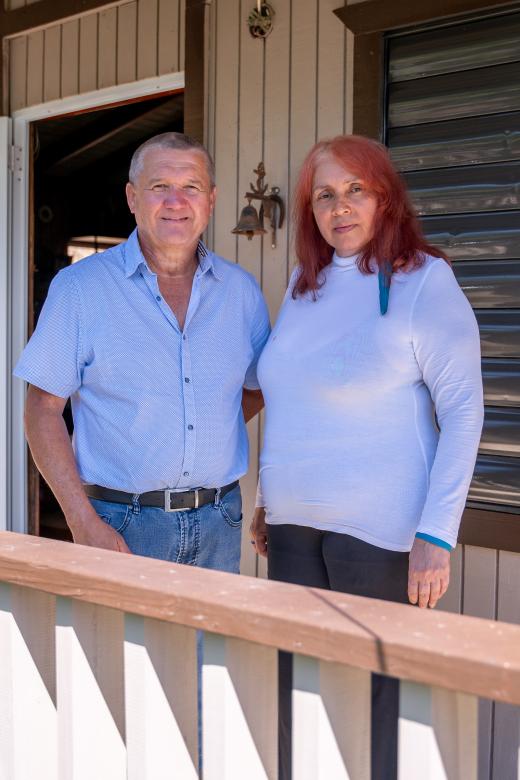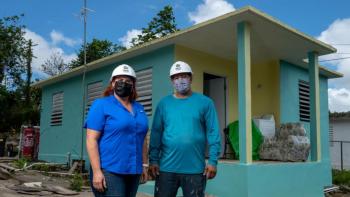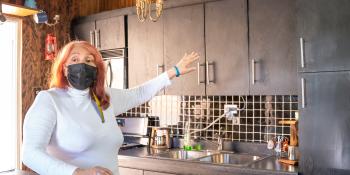Five years ago, AbbVie, a research-based global biopharmaceutical company that has operated on the island for nearly 50 years, donated $50 million to Habitat to help families and communities recover from the devastation of hurricanes Irma and Maria in 2017 and strengthen access to housing in Puerto Rico. With AbbVie’s support, Habitat has partnered directly with hurricane-affected families, like Antero and Luz, to address their shelter needs. Besides home repair work, Habitat’s holistic program also supports workforce development, securing land tenure and fostering long-term improvement to shelter and land resilience issues.
During their repairs, Antero and Luz’s home received a new roof and kitchen cabinetry, waterproofing of the concrete roof, replacement of an aluminum door and interior wood doors, general electric work, and repair of their balcony and stairs as well as interior and exterior paint. Antero also used his skills as an artisan to help personalize some of the repairs, including purchasing and installing trim for the windows, and he installed a new gas stove.
A safe place to be
“We live more confidently now,” says Antero. “We no longer have leaks. When I saw how the house was and seeing it now, it’s like a load that has been taken off. We even enjoy downpours now because we know we’ll stay warm and dry.”
The couple loves being able to have family over again and looks forward to spending many more joyous occasions with their children and two grandchildren. “Home is happiness,” Antero says.


